There are essentially two forms of art with children PROCESS and PRODUCT art.
Different people value different things when it comes to art (and child-rearing in general), but there are two main differences with process and product art.
Process art values the experience of creating with a focus on the tools, techniques, and experience.
Product art values the end result rather than producing it.
I am not here to shame anyone for doing craft activities with their child or in their classroom, of course there are benefits to product art like fine motor through tracing and cutting and following directions. It is also super cute to create a cute spider for Halloween and a Santa Claus for Christmas. I am not against fun or cute, but I am here to advocate for a more open-ended and creative way for children to express themselves through art.
Disclosure: This post may contain affiliate links, which means we may receive a commission if you click a link and purchase something that we have recommended. While clicking these links won’t cost you any extra money, they will help us keep this site up and running! Please check out our disclosure policy for more details.

Why use process art vs. a craft activity with children?
Open-ended
With process art there is not one goal in mind. There is not a sample or pre-cut pieces carefully laid out by the parent or caregiver. This leads to open-ended exploration and learning. Children learn best through open-ended exploration because they are not limited to adults’ preconceived notions about what the child needs to be learning at a given time. Children use the materials in a way that meets their own needs.

There is no right or wrong way to create
With a craft activity or product art there is a specific goal in mind. There might even be a sample product shown by the parent, caregiver, or educator. With product art there are also step-by-step instructions on how to create.
This is not the case with process art. There are no samples, step-by-step instructions, or right or wrong ways to proceed. You will not see adults correcting mistakes.
This allows much more freedom of expression and freedom to take risks. A child does not experience frustration with process art that sometimes comes with product art.

Focus on Tools, Techniques, and Materials
The focus of product art is on the tools, techniques, and materials vs. the end result. Instead of making sure I make something that looks like a Christmas tree, I am more concerned about the colors I am using, how to get the paint on the paper, or how to get something to stick where I want it to. This focus lends well to problem-solving and vocabulary development.

Experience is calming
When there are more restrictions and a specific goal in mind with art, a child can feel confined and frustrated. They may make “mistakes” that lead them to feel insecure or not good enough.
With open-ended process art children do not feel these same frustrations. They are free to explore and create as they wish. They get to make more choices, which reduces tantrums and meltdowns. Choices also allow them to feel self-esteem.
This is not to say process art is always calm. Sometimes it is rambunctious and messy, but the point is children feel joy not frustration.
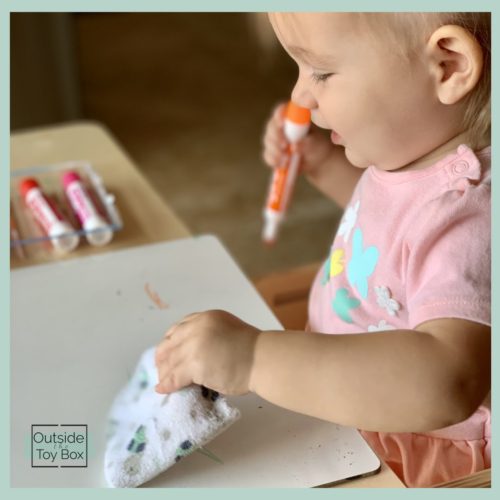
Encourages self-expression, creativity, choice making, risk taking, self-regulation, and self-confidence
There are so many skills that process art supports and many of them are life skills. Check out mindinthemaking.org for more on essential life skills. Without confinement to a specific product, children have the freedom to choose and express themselves.
Making choices and putting marks down that represent thoughts, feelings, and experiences can be risky and can take some self-regulation. Putting ourselves in a vulnerable place can be considered emotionally risky and therefore process art develops those risk taking skills.
Oftentimes with process art you will hear a child say, “Look what I made!” more so than with a craft activity. They are proud of their work and what they accomplished. They have more ownership over what they did because there were more skills involved.

The art is completely the child’s own and is original and unique (no sample product)
How many times have you gone into a school and on the bulletin board is 20 of the exact same “Insert craft here?”
That would be considered product art.
And while yes, product art has some great benefits of fine motor and following directions, it lacks some of the originality that process art can give.
Don’t get me wrong, my mom still has some of the crafts I made in school and treasures them, but when creating a unique gift or card for a loved one, I think it is better to have their unique work. I personally love the scribbles and random sizing and placement of toddler process art vs. adult-directed “put that circle here” kind of work.

Tips for engaging young children with process art
Focus on the Techniques and Materials
- Remember it is not about how the end result looks. In fact, many times process art is really just about the process and doesn’t actually end in a product at all. Make sure you provide a lot of various materials to use to create and model different techniques of using the materials.
- Some materials you may want to try are:
-
-
- Markers
- Crayons
- Dry Erase markers/board
- Tempera paint
- Watercolor paint
- Glue
- Dot markers
- Glitter
- Edible finger paint
- Spray bottles with colored water
- Torn tissue paper
- Collage materials
- Nature materials
- Clay
- And so many MORE!
-

Interact with open-ended questions and comments
- Instead of asking WHAT they are creating, try asking HOW they created something. This keeps the focus on the process rather than the product.
- Some more comments and questions you could include:
-
-
- Wow, you used lots of blue!
- Why did you choose to put that there?
- How does your work make you feel?
- You spent lots of time on this, what would you like to do with it now?
- What did you enjoy about this art?
- What other materials would you like to add?
- How did you make that splatter?
- Look how you go side to side with the paint brush. Can you try up and down?
- How else can you move the paint brush?
-

Provide time and space for creation
- Allow plenty of time for your child to create and even come back to their work if they would like to.
- Create an art space so they can freely choose their art materials. If you are worried about your toddler, then bring out a variety of materials to choose from and create a “yes” space when you are going to create.
- Make sure you plan ahead for mess and don’t let the mess scare you or prevent you from starting the process at all.

Realize that not all art will create something Art Show Ready
- With process art it is exactly that, a process. Sometimes it will give you something beautiful to hang on the wall or to gift to someone you love and other times it will create a beautiful mess.
- BOTH are beneficial and beautiful art for young children. When you realize they won’t all be art show winners, then you let go of your expectations and truly support your child in creative expression.
Some Supplies you might need
Crafty Crayons Shop Car Crayons
A Good Life Products Toddler Art Smock
Junebug Essentials Plant-based DIY Finger-paint
Creative Play Kits Art Box
Some Examples of Process art
- Collage
- Sculpting with clay
- Shake painting
- Painting on foil
- Painting on mirrors
- Pour painting
- Stamps and stickers
- Ripped paper collage
- Sponge painting
- Finger painting
- Spray bottle painting
- Using Nature items as paint brushes
- Bubble wrap painting and printing
- Car ramp painting
- Mark making with markers, pencils, oil pastels, crayons, pens, dry erase
- Water painting
- Blow painting
- Painting rocks
- SO MANY MORE!
Please add your process art ideas in the comments below. I love getting more inspiration from others.
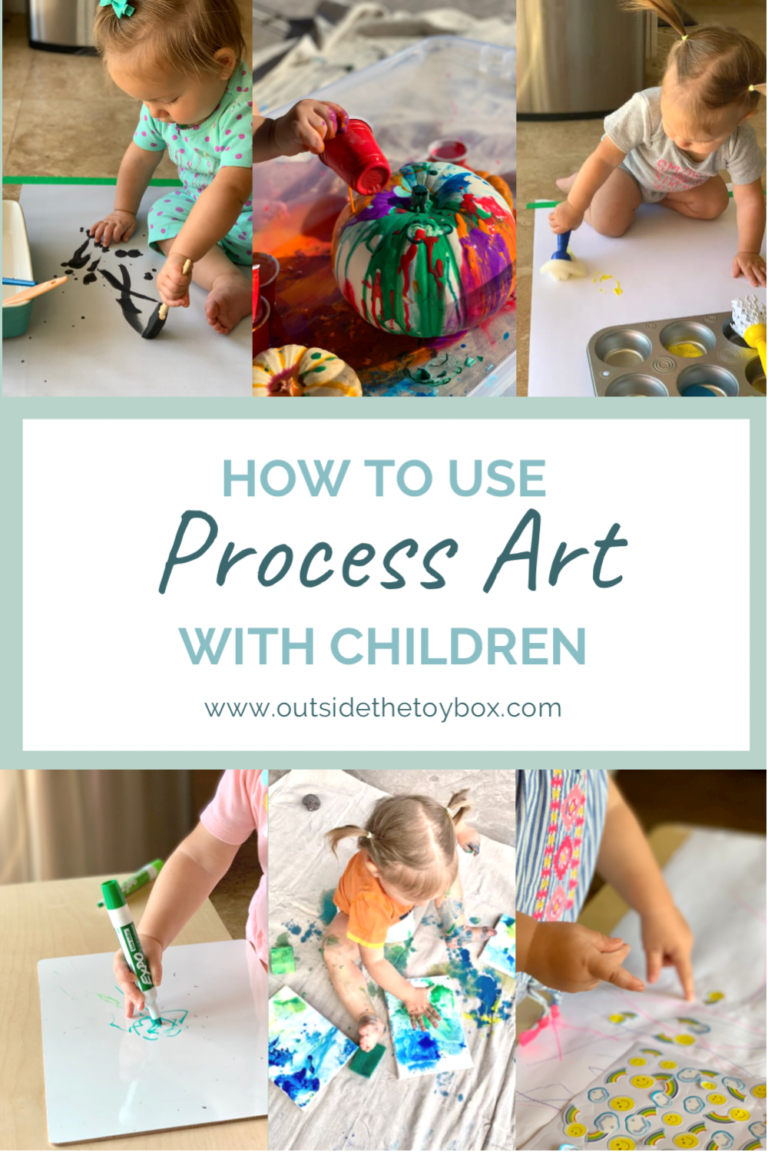

Share on facebook
Facebook
Share on pinterest
Pinterest
Share on email
Email
Share on print
Print
Please help to support my blogging efforts by sharing this post to others who may find some value in its contents.
Subscribe to Stay up to date
We will send you updates, but promise never to spam you (who has time for that?)
Follow us on Social Media to get daily play inspiration.


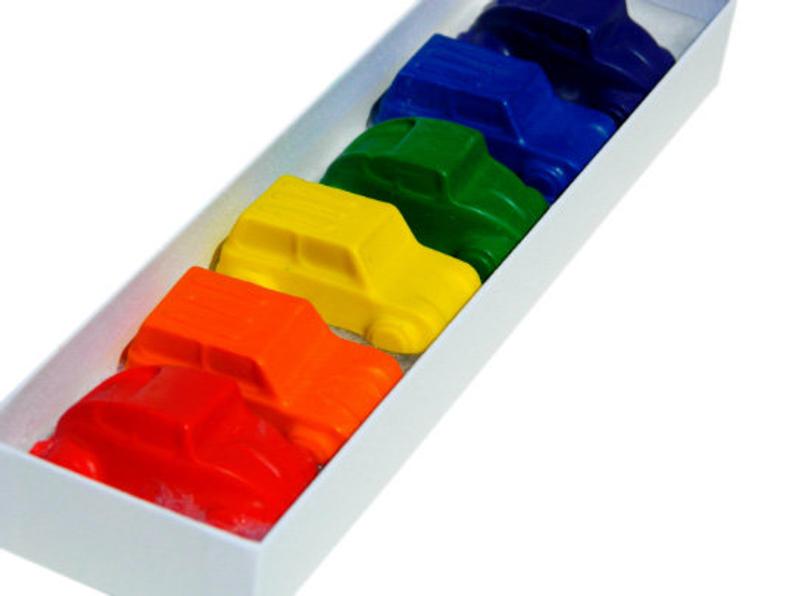
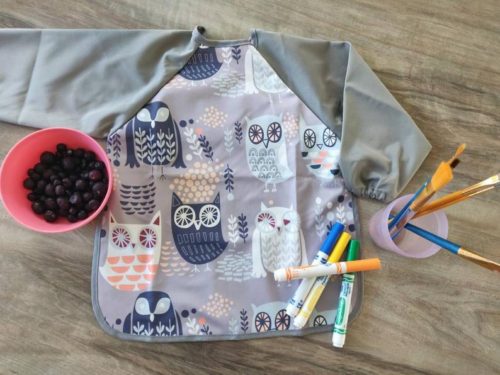
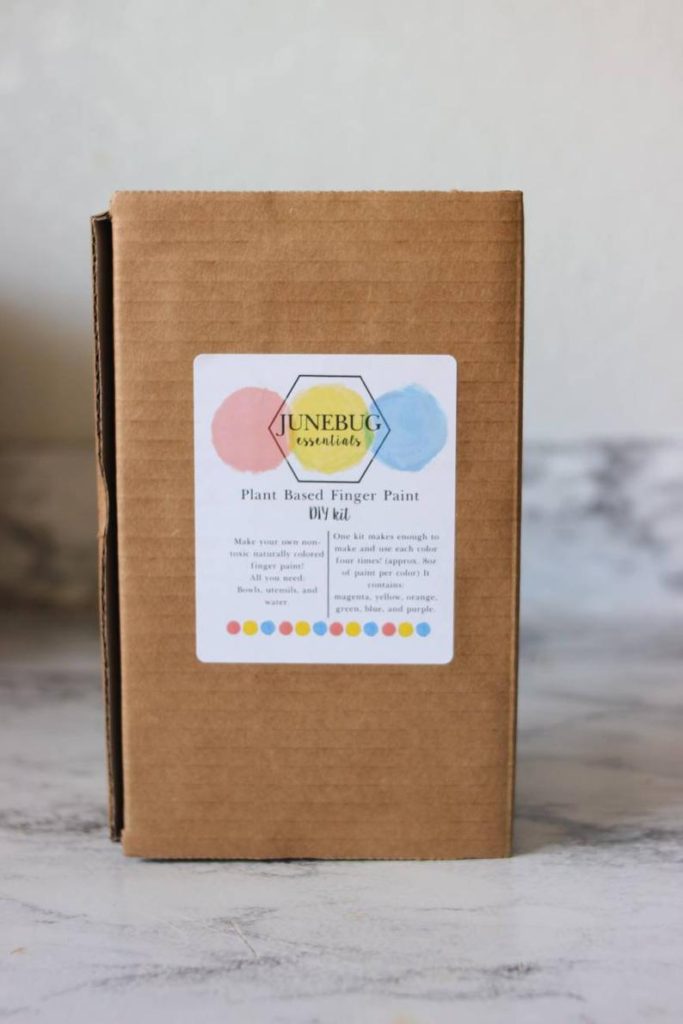
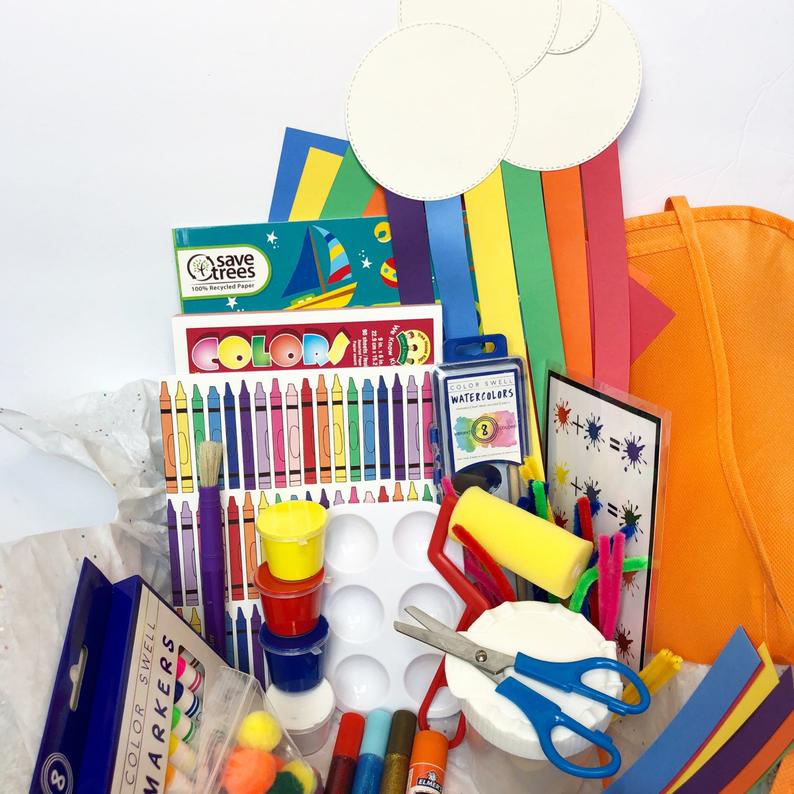
Trackbacks/Pingbacks